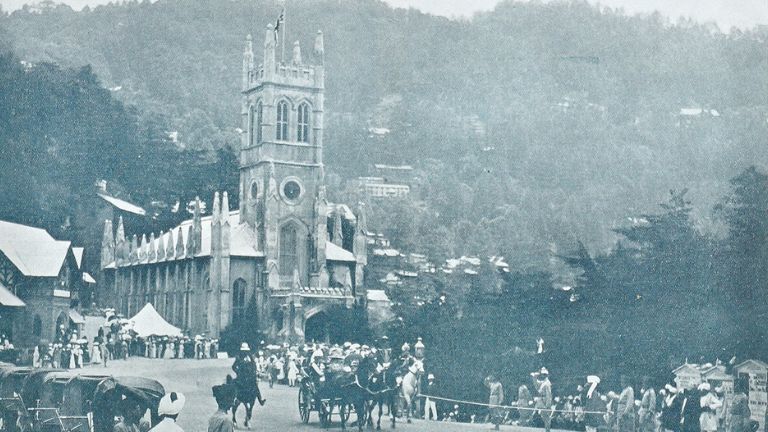History of Shimla Town: Shimla is the Capital Town of Himachal Pradesh. It was formerly the summer capital during the British Rule. The town of Shimla is built over several hills and connecting ridges. The important hills are Jakhu (8050 ft). Prospect Hill (7140 ft), Observatory Hill (7050 ft), Elysium Hill (7400 ft), and Summer Hill (6900 ft). There is a great controversy over the origin of the name Shimla.
The name Shimla was derived from ‘Shyamalaya meaning blue house said to be the name of house built of blue slate by a faqir on Jakhu. According to one version Shimla takes it name from ‘Shamla meaning a blue female another name for Goddess Kall. The place was on the Jakhu Hillside, there was a temple of Goddess Kali. During the British period the image of the Goddess was shifted to a new place, now famous Kali Bari Temple.
Early British Settlement in Shimla

Shimla remained unnoticed during the Gurkha War. It was only in 1819 A.D. that the then Assistant Political Agent of hill states Lt. Ross set up first British residence, a mere wood cottage. His successor Lt. Charles Patt Kennedy’ errected the first pucca house in 1822 named after Lt. Kennedy as “Kennedy House’.
Roads, Railways, and Summer Capital Status

The construction of Hindustan Tibet road was started in 1850-51 commencing from Kalka and first lap was upto Shimla. The Road upto Shimla came to be used for wheeled traffic by 1860. A 560 feet Jong tunnel was constructed beyond Sanjauli.
In 1864 Shimia was declared as the summer capital of India. After Independence, Shimla became the capital of Punjab and was later named the capital of Himachal Pradesh. In 1903 a rail line was constructed between Kalka and Shimla.
Shimla’s Natural Beauty and Colonial Heritage

Shimla has been blessed with all the natural bounties, one can think of. Dwelling on a panoramic location, the hilly town is surrounded by green pastures and snow-capped peaks. The spectacular cool hills accompanied by the structures made during the colonial era create an aura, which is very different from other hill stations.
Bulging at its seams with unprecedented expansion, Shimla retains its colonial heritage, with grand old buildings, among them are the stately Viceregal Lodge, Charming iron lamp posts and Anglo-Saxon names. The Mall, packed with shops and eateries, is the centre of attraction of the town, and Scandal Point, associated with the former Maharaja of Patiala’s escapades, offers a view of distant snow clad peaks.
Shimla’s Role in Indian History
In 1946 leaders of the Indian nationalist movement came to Shimla for a crucial conference that paved the way to Independence.The completion of the Kalka-Shimia narrow-gauge railway line, in 1903, gave a fillip to the towns development. After Independence, Shimla was initially the capital of Punjab. Following the creation of Himachal Pradesh, in 1966, it was designated the capital of the Himachal Pradesh.








